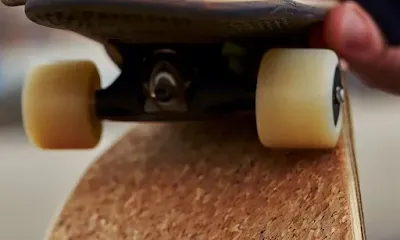Longboarding, with its sweeping carves and smooth rides, offers a unique skating experience. One question that many new longboarders ask is: "Do longboards need grip tape?" The answer is a resounding "yes!" for most cases. Let's delve deeper into the importance of longboard grip tape and how it functions.
Quick Answer: Yes, longboards need grip tape to provide traction and prevent the rider's feet from slipping, ensuring safety and better control during rides.
Understanding the Role of Grip Tape
Traction for the Rider
Grip tape is an essential component for any board, whether it's a regular skateboard or a longboard. It offers traction, ensuring the rider's feet remain firmly on the deck. Without it, especially during high-speed rides, quick maneuvers, or steep downhill paths, a skater might find themselves losing their footing and falling off.
Aesthetic Appeal
Beyond its practical uses, grip tape can also add to the visual appeal of the longboard. From standard black grip to clear grip, and even grip tapes available in various shapes and designs, there's something for every aesthetic preference.
Installing New Grip Tape
For those new to the world of longboarding, installing new grip tape can be a bit intimidating. However, with the right tools and steps, the process is straightforward.
Preparation
Begin by removing your old grip tape. This can be done by using a razor to edge under one end of the grip tape, then slowly peeling it off. Ensure the entire deck is clean before moving onto the next step.
Laying Down the Grip
Peel off the backing from one board end of the grip tape and stick it onto the board. Slowly roll the grip tape onto the board, ensuring there are no air bubbles or wrinkles. Press down firmly, covering the entire deck. Clear grip, black grip, or any high-quality grip should easily adhere to the surface.
Cutting and Trimming
Use a razor to trim and cut the grip tape, following closely to the edge of the board. Any excess grip tape hanging off can be scraped off. Ensure you cut in one continuous, circular motion to avoid uneven edges.
Final Touches
With the grip tape firmly in place, check for any bubbles or wrinkles. If you spot any, use a pin to prick them and flatten the tape. Finish off by scraping the edge of the board with something hard, like the edge of a screwdriver, to ensure the grip tape is sealed tightly and uniformly.
Maintaining Your Grip Tape
Cleaning
Skaters often find their grip tape becoming less effective due to dirt and debris. Regular griptape cleaning is necessary to maintain good grip tape. Clean your grip using a soft brush, and if needed, a cleaning solution designed for grip tapes.
When to Replace
Over time, even the best grip tapes can wear out. If your tape starts to peel, lose its abrasive nature, or become too smooth, it might be time to consider applying brand new grip tape.
Choosing the Right Grip Tape
When selecting grip tape, skaters should look out for a few key attributes:
Grit Level
Grip tapes come in varying levels of grit, much like sandpaper. An 80 grit is a standard grip that offers a good balance of comfort and traction. For those looking for something coarser, which can offer hardcore traction, they might opt for grip tapes with a higher grit number.
Design and Clarity
For those looking to showcase deck designs underneath, clear grip tape is an excellent choice. However, for skaters wanting something more decorative on top, many grip tapes offer unique shapes, designs, and colors.
Adhesion
A grip tape's sticky factor is crucial. High-quality grip tapes will adhere to the board seamlessly, with minimal chances of peeling or bubbling.
Conclusion
While some may argue the necessity of grip tape on a longboard, especially if used for casual cruising, the benefits it brings in terms of safety, control, and customization are undeniable. It enhances the skater's experience, ensuring each ride is safe and in control. Whether you're a casual cruiser or a downhill racer, good grip tape can make a significant difference in your skating journey.

